Culture of Connecting Educational Recovery Project
Governor’s Education Assistance & Youth Empowerment Grant Program
Awarded Notice: August 2021
Start Date: October 1, 2021
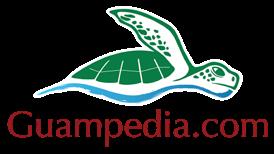
This 2022 annual report was produced by Guampedia Foundation, Inc. 303 University Drive UOG Station Mangilao, Guam 96923 www.guampedia.com
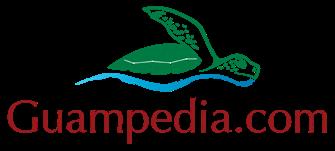

Contents Guampedia Overview Guampedia Moving Forward iii Organizational Structure v Culture of Connecting Educational Recovery Voyage Crew vi Project Framework and Team Composition vii Chamorro Calendar: 13 Pulans / Un sakkan x 13 Guampedia Initiatives 1. Website Content Audit, Update and Redesign - Tumaiguini 2 Updated Flickr Shortcodes 3 Updated “For further reading” Sections 4 Guampedia Bibliography 5 2. Modern Guam Rises from the Destruction of War - Maimo’ 7 Modern Guam Rises Page 8 Modern Guam Rises Sections 9 3. Voices of Our Elders - Umatalaf 12 Voice of Our Elders Page 13 Voices of Our Elders Media 14 Speaker Joaquin C. Arriola Videos 15 Joaquin “Kin” C. Arriola 17 4. MicrONEsia Milestones: Voyaging for 4000 YearsEducational Outreach - Lumuhu 19 Island Wisdom PWO Ceremony 23 PIFA Milestones 26 5. Marianas History Conferences - Makmamao 28 5th Marianas History Conference E-Publications 29 6. Developing User Surveys & Profiles - Mananaf 32 User Surveys 33 Survey Reward: Postcards 34 PIFA Survey Takers 35 7. Collaboration with UOG Press - Semu 37 Assisting UOG Press 38 8. Collaboration with CAHA - Tenhos 40 Guampedia Heritage Gift Shop 42 Latte in the Marianas Book 45 9. Guampedia Gift Shop Outreach and Promotion - Lumamlam 47 Guampedia Heritage Gift Shop & Cultural Producers 48 Ben “Sinahi” del Rosario 49 Guampedia Heritage Gift Shop New Design 50 Ben “Sinahi” del Rosario Pieces 53 10. Collaboration with UOG - Fanggualo 55 University of Pittsburgh Study Guam 2022 57 PIFA Highlights 58 11. Collaboration with Department of CHamoru Affairs, Guam Museum - Sumongsong 60 Fanohge CHamoru Exhibition 61 Educational Programming Tours 61 Welcome to the Guam Museum 62 12. Collaboration with Commission on Decolonization, Guam Museum - Umayanggan 64 “Fanohge CHamoru Put I Tano’-ta: Charting Our Collective Future” 66 13. Collaboration: Hagåtña Restoration and Redevelopment Authority - Umagahaf 70 1st Annual Sirena Festival 72 i
Guampedia Overview
Organizational Background
In its initial creation, the Guampedia community project was organized and developed under the guma of the Humanities Guåhan as a grant project in 2002 with the website going online in 2008.
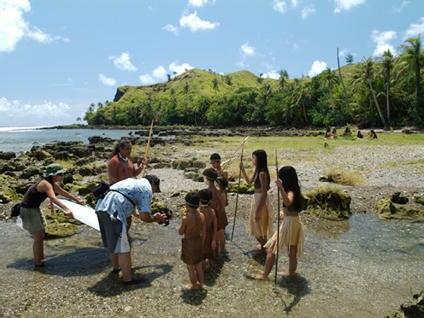
In 2009, Guampedia transitioned out of the Council and became its own nonprofit organization and affiliate of the University of Guam, establishing its guma. Like the twoset guma latte, Shannon Murphy as Managing Editor, along with its Board of Directors, served as the organization’s management and leadership support pillars; with editors, Tanya Mendiola then followed by Dominica Tolentino, to support website content alongside Nathalie Pereda serving as media editor and assist with website management.
In 2011, in an effort to promote and garner community support for the educational website, Guampedia’s Board of Directors brought on the Managing Director. Serving alongside the Managing Editor to build the educational website further through outreach and content development, along with the support of both the media and content editors. The management style and approach adopted was one of collaborative leadership based on consensus building for the well-being of the organization and the community it serves. Both executive managers collaborated on organizational matters and initiatives under the guidance of the Board of Directors. Over the course of eight years, this organizational two-set latte support structure, along with public funding and project-based assistance - from the Government of Guam, grant funders, researchers, writers, educators, artisans and cultural producers respectively, collectively achieved significant milestones with content development, audience reach and community support and engagement.
Although Guampedia’s full-time Managing Editor retired in 2019 from employment status, as a founding member and project manager of Guampedia since its inception, Shannon Murphy transitioned to Managing Editor emeritus and service provider. With this transition in leadership, the Managing Director consults with and engages regularly with the President of the Board of Directors. In addition, management retained service provider, Marie Perez, as fiscal officer for the organization. This management framework provides the administrative support and internal check and balance system to replace the co-management system that was in place since 2011.

ii
Guampedia Moving Forward
Organizational Structure Moving Forward

Guma Guampedia has been managing and operating the online educational resource for more than 14 years - supported by a two-set latte organizational structure. In 2020, as Guampedia embarked on its 12th year serving the island, with plans set forth to expand its content and network in the region and engage in future planning and development, the COVID pandemic severely altered this work plan. Over the past 24 months, Guampedia has engaged in adaptive management practice, cautiously navigating through challenges and issues brought on by the global pandemic.
On May 31, 2021, Guampedia applied for CARES funding through the Governor’s Education Assistance & Youth Empowerment grant program. The core purpose and objective of this project is to leverage the power of technology and culture-based education to help support students through this global pandemic that has altered the course of education into the digital realm.
Upon receiving notice of award from the Office of the Governor, planning and development for the expansion of Guampedia’s guma began - to provide the necessary foundation to support the organization’s continued growth and roles in serving the island and region para mona (moving forward) and to successfully embark and complete this 24-month education recovery voyage.
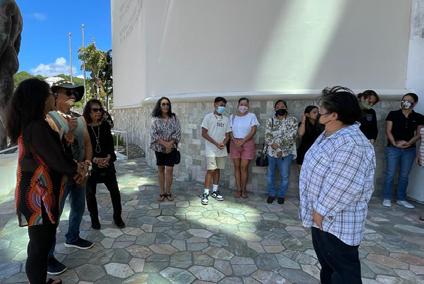
iii
The four original pillars of Guma Guampedia - mission, vision, website content and management will serve as the four cornerstones of the organization that will continue to ensure stabilization and sustainability. Through this grant, Guampedia was able to respond to the community’s educational needs that also support youth empowerment, by expanding its capacity with two additional latte sets. The new organizational structure and key roles are as follows:
Latte
Mission:
EXECUTIVE MANAGEMENT -

&
Latte
WEBSITE - Content & Management
Latte
COMMUNITY ENGAGEMENT - Outreach & Branding
Managing Director,
Branding:
Latte
ADMINISTRATION
Human Resources:
Finance:
Set I:
Mission
Vision
Managing Director /Managing Editor Emeritus Vision: Board of Directors
Set II:
Website Content: Editorial Team Website Management: Website Manager
Set III:
Editors, and Program Coordinators
Managing Director, Creative Director, Production Team
Set IV:
- Human Resources & Finance
HR/Management Consultant & Office Manager
Fiscal Officer & Office Manager iv
Organizational Structure


GUAMPEDIA
GUMA
SET I EXECUTIVE 1. MISSION 2. VISION SET III COMMUNITY ENGMT 1. OUTREACH 2. BRANDING SET II WEBSITE 1. CONTENT 2. MANAGEMENT SET IV ADMIN 1. HUMAN RESOURCES 2. FINANCE Board of Directors: Dr Anita Borja Enriquez, Alice Taijeron, and Teresita Perez Shannon Murphy, Managing Editor Emeritus/Matlinan Guampedia v
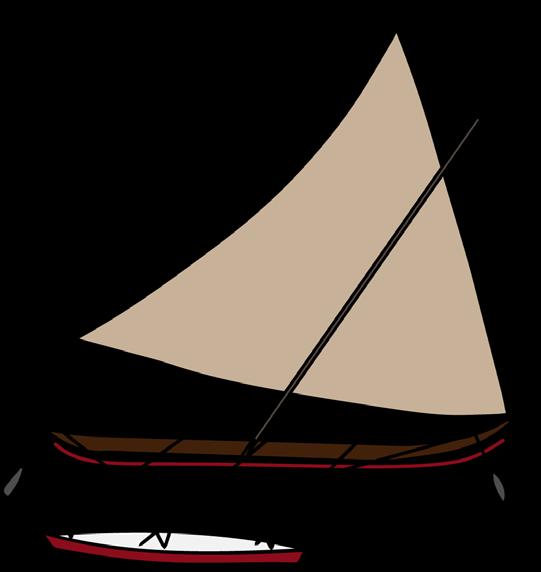

Sail: 1. Burt Sardoma, Production Manager 2. Tom Tanner, Producer Paddles: Service Vendors 1. Raymond Anderson 2. Eulalia V. Arriola 3. Fanai Castro 4. Drew Murphy 5. Rollem Production Outrigger: 1. Nathalie Pereda, Website Manager 2. Shannon Murphy, Managing Editor Emeritus 3. Dominica Tolentino, Editor Mast: 1. Marie Perez, Fiscal Officer Navigator: 1. Board of Directors 2. Rita Nauta, Managing Director 3. Lori Okada, HR/ Management Steer: 1. Delia Cruz, Office Manager Bailers: 1. Lazaro Quinata, Prog Coord II 2. Celeste Perez, Prog Coord II 3. Interns Culture of Connecting Educational Recovery Voyage Crew vi
Project Framework and Team Composition
Culture of Connecting Educational Recovery Project Framework and Team Composition
With the expanded organizational structure in place for the guma Guampedia, the organization successfully launched and completed segments of the 13 charted initiatives.
The following outlines the key roles and responsibilities of each crew member associated with the different aspects of the canoe and its purpose:
1. To navigate the voyage and charting the course to completion of the 13 initiatives, Rita Pangelinan Nauta, serves as the overall project manager; Guampedia’s Board of Directors provide the light and vision to guide the voyage forward, along with human resources and management service provider Lorraine S. Okada.
2. To steer the canoe through its charted course based on the Project’s 13 initiatives and expected outcomes and manage its crew members, Delia C. Cruz serves as Office Manager.
3. To ensure balance and stability throughout the voyage, the outrigger, which is connected to the single-hull or main vessel, in this case, the Guampedia website. Serving to optimize the website and integrate the resources produced will be Website Manager, Nathalie Pereda; Managing Editor Emeritus, Shannon Murphy and service provider, Dominica Tolentino.
4. The ingenious mast design of Micronesia’s unique seafaring vessel provides the means to maneuver the vessel to optimize changing conditions to maintain the vessel’s course forward; serving to manage and maintain all fiscal and administrative matters will be Fiscal Officer, Marie Perez.

5. The Micronesian pandanus sail design is quite remarkable
optimizing the wind conditions to move the vessel forward with impactful speed; in this digital age, multi media resources are considered highly impactful and effective as learning resources, particularly for youth; serving to manage multimedia production is Burt Sardoma, as Production Manager and Tom Tanner as Producer.
6. The bailers are used by crew members to remove the water retained in the vessel’s hull; this is an integral part of ensuring a successful voyage, notwithstanding any natural or manmade global crisis and/or natural disasters; to assist in coordination efforts of the 13 initiatives of this project are Program Coordinator II’s Lazaro Quinata and Celeste Perez.
7. The crew members with their paddles, help to make strides towards a successful voyage especially when prevailing winds subside; service providers have been engaged by Guampedia for project specific tasks within the course of the 13 initiatives; following are some of Guampedia’s key service providers: Raymond D. Anderson, Creative Director, Graphic Artist and special projects coordinator Eulalia Villagomez Arriola, Guampedia Online Heritage Giftshop Manager, Social media and NMI community outreach Fanai Castro, Guampedia Educational Program Assistant Drew Murphy, Multimedia Editor and Producer, Marketing and Promotions
Roll’em Productions, MicrONEsia Content Development and Production
vii
October 2021 Newsletter
Culture of Connecting Educational Recovery Project
The word culture has many different meanings. For some it refers to an appreciation of good literature, music, art, and food. For a biologist, it can mean a colony of bacteria or other microorganisms growing in a nutrient medium in a laboratory Petri dish. However, for anthropologists and other behavioral scientists, culture is the full range of learned human behavior patterns.
The term was first used this way in 1871 by English anthropologist, Edward B. Tylor, in his book, “Primitive Culture.” Tylor wrote that culture is “that complex whole which includes knowledge, belief, art, law, morals, custom, and any other capabilities and habits acquired by man/woman as a member of society.” Culture is a powerful human tool for survival. Culturebased education refers to teaching and learning that are grounded in
a cultural worldview, from whose lens are taught knowledge, skills, content, and values that students need in today’s global society.
Micronesia is rooted in more than 3,500 years of cultural heritage. Our indigenous knowledge and island wisdom have been sustaining and connecting our island communities throughout natural disasters, colonization, war and pandemics. Using the digital platform to preserve our cultural heritage and making it accessible online in a comprehensive and scholarly space elevates our indigenous cultures through the lenses of our younger generations. Guampedia, through the Governor’s Education Assistance & Youth Empowerment grant program, will be able to leverage the power of technology with our rich cultural heritage to help support teaching our students
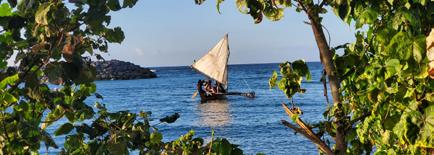
through this global pandemic, which has altered the course of education into the digital realm.

It is for this very reason that Guampedia is prepared to embark on a 24-month voyage to cultivate and implement this culture of connecting education recovery project. With thirteen educational initiatives charted, this project is formulated to help navigate safely through this ongoing pandemic and guide our youth towards being rooted in their community’s sense of place and cultural identity.

We believe that the programs and learning resources that we will be creating through this grant program will help to empower our island youth and cultivate a culture of connection in education at different levels and across different sectors of our island’s local and global community.
 Guampedia is a non-profit affiliate of the University of Guam with operations funded by the Government of Guam’s Tourism Attraction Fund.
Traditional seafaring canoe. Courtesy of Traditions Affirming our Seafaring Ancestry
Guampedia is a non-profit affiliate of the University of Guam with operations funded by the Government of Guam’s Tourism Attraction Fund.
Traditional seafaring canoe. Courtesy of Traditions Affirming our Seafaring Ancestry
viii
Culture of Connecting Educational Recovery Project


ix
October 1, 2021- September 30, 2023

x Chamorro Calendar: 13 Pulans / Un sakkan 1. Tumaiguini (January) This is the way, or like this 2. Maimo’ (February) 3. Umatalaf (March) Time to catch gatafe (type of fish) 4. Lumuhu (April) Time to return, or resume one’s route 5. Makmamao (May) 6. Mananaf (June) Signifies to go on all fours, to crawl 7. Semu (July) 8. Tenhos (August) Stormy or angry 9. Lumamlam (September) Season of lightning 10. Fanggualo (October) Planting season 11. Sumongson (November) Season to repair the nets, stay in the village 12. Umayanggan (December) Unsettled or weepy; season of short frequent showers 13. Umagahaf To catch shrimp
Guampedia Initiatives
13
Tumaiguini

1. Website Content Audit, Update and Redesign -
A. Description: Review and update each entry in Guampedia. Review for style consistency. We finished about 500 entries over the past year. Goal: Audit remaining 700 entries with updates, additions and review for style consistency; Enhance Educators Portal with Guam History lesson plans aligned to DOE Essential Core Curriculum. B. Description: Guampedia needs to be updated to keep up with technology and stay fresh. Our last redesign was in 2015. Goal: Redesign website and curate content for target audiences and to provide student learning engagement opportunities. 2
Updated Flickr Shortcodes

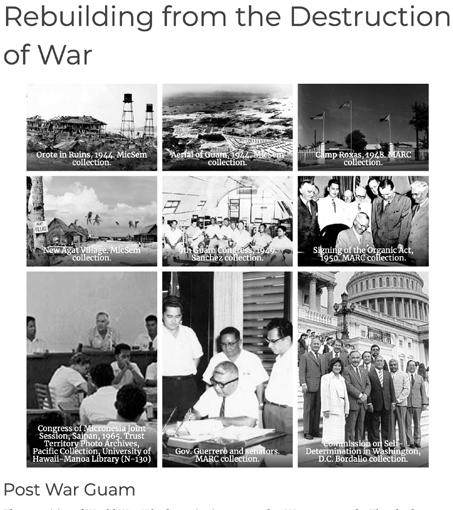

Replaced old Flickr plugin and the shortcodes located in every Guampedia entry. Old Flickr plugin codes. Entry after the old Flickr plugins are replaced.3
Updated “For further reading” Sections
Reviewed and updated the “For further reading” sections located at the end of each entry for consistency. This section provides students and researchers access to additional resources.

Working on “For further reading” sections in Google Documents to share with team.

Updated “For further reading” section in the “Early European Observations of CHamorus”.

4
Guampedia Bibliography

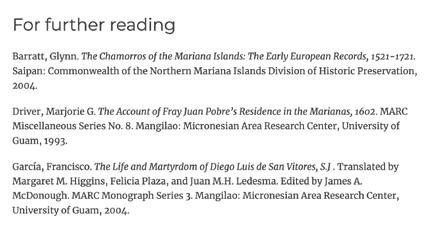
Updated “For further reading” section in the “Early European Observations of CHamorus”.
Collection of the updated “For further reading” sections in a Google Document for the team.
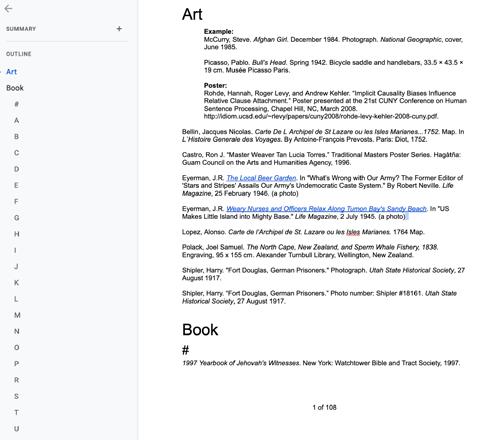
5
Moving Forward

Audit ongoing
Research and planning for the Redesign of website front page
Production of Multimedia Entries.

•
•
•
6
of
from the

- Maimo’
2. Modern Guam Rises
Destruction
War
Description: Documenting Guam history from 1945 to 1970, recovering from war, military land takings, beginnings of Government of Guam and civilian rule. Phase 2 completed with 16 new entries and special section launched on website. Goal: Phases 3 and 4: 15 entries each phase with media, oral history interviews, lesson plans that engage students and provide learning opportunities. 7
Modern Guam Rises Page

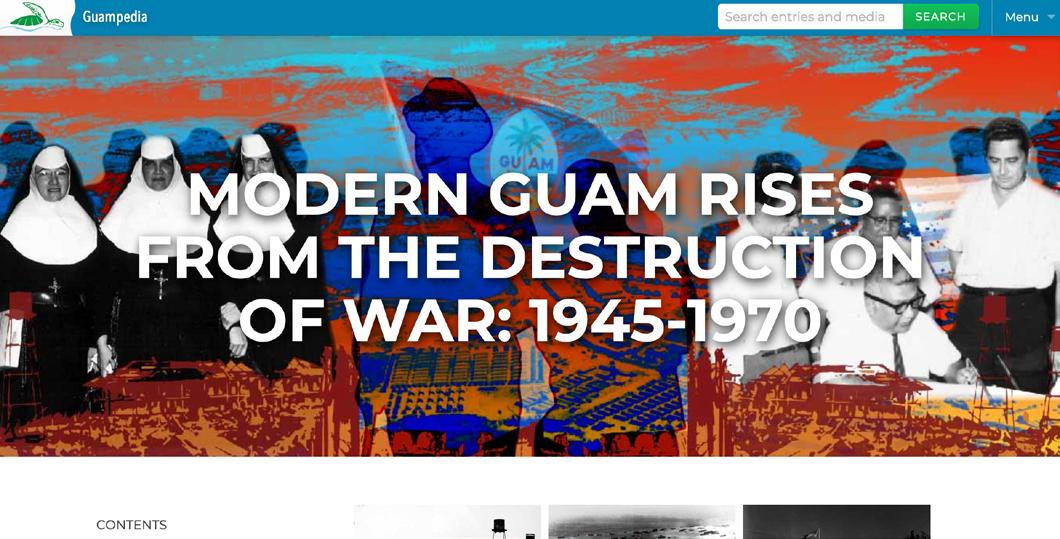
8
Modern Guam Rises Sections




9
New Histories On How Guam Modernized After WWII

April 2022 Newsletter

At the end of World War II, Guam was again placed under the control of the US Navy. Guam remained politically separated from the Northern Mariana Islands, which were placed with Japan’s other Micronesian territories of Palau, Yap, Pohnpei, Kosrae, Chuuk and the Marshall Islands under a United Nations trust to form the US Trust Territory of Pacific Islands (TTPI) to be administered by the US.
By the 1950s, with a new civilian government in place and the end of naval rule, the people of Guam began to forge a new direction towards modernity, urbanization and enjoying the opportunities of an American way of life. The term “Guamanian” reflected a new kind of identity and outlook for the people

of Guam, who had survived the atrocities of war. Civilian governors were appointed by the president of the US. However, Cold War politics after World War II increased the US’ strategic and military interest in the region, and so Guam maintained large military bases on different parts of the island.
In 1952, the Territorial College of Guam was established by Governor Carlton Skinner. The college moved to its present location in Mangilao, and became the University of Guam in 1965.
In 1960, Joseph Flores was appointed the first CHamoru/ Chamorro governor of Guam. In 1962 President John F. Kennedy lifted the security clearance that had restricted entry into Guam since 1941. With this order, the island was opened up for tourism to blossom as an industry. The easing of military restrictions for entering Guam and the establishment of a local, civilian government, made the island an ideal place for people from all over the world to visit, go to school, find jobs or pursue a variety of economic interests.
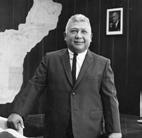
In 1963, under the second CHamoru/Chamorro Governor Manuel F. L. Guerrero, the Guam Tourism Commission was established. The Guam International Airport opened in 1967, and the first flights from

Japan via Pan Am arrived on-island. By the end of the 1960s and into the 1970s, Tumon Bay became the focus of a new wave of construction for numerous high-rise hotels, condominiums and entertainment venues.
Guampedia has committed to researching and writing about this exciting era of Guam history in a multi-year project. The first 16 of the new entries, along with oral histories and source documents, can be found at Modern Guam Rises from the Destruction of War, and was made possible with funding support from the Guam Preservation Trust and the Guam Economic Development Authority’s Qualifying Certificate Community Contributions program.
Guam Store in 1946/ Courtesy of the Guam Public Library
Photo of Governor Manuel Guerrero/ Courtesy of the MARC
Guampedia Newsletter,
Special
Edition
| Page 2
10
Moving Forward

• Phase 3: Writers assigned to produce 15 written entries.
• Writers Retreat will be conducted Nov 2022.
• Oral History Interviews and section lesson plans to be produced and e-published.

11
3. Voices of Our EldersUmatalaf
Description: Oral history interviews with elders and video production; A series of oral histories will be conducted with traditional scholars and cultural practitioners to document their knowledge on Marianas history and cultural knowledge, paying attention to specific historical events. Goal: Interview and create vignettes that will be added to entries to provide cultural heritage learning resources that engage students and help to support their emotional and social well-being.

12
Voice of Our Elders Page

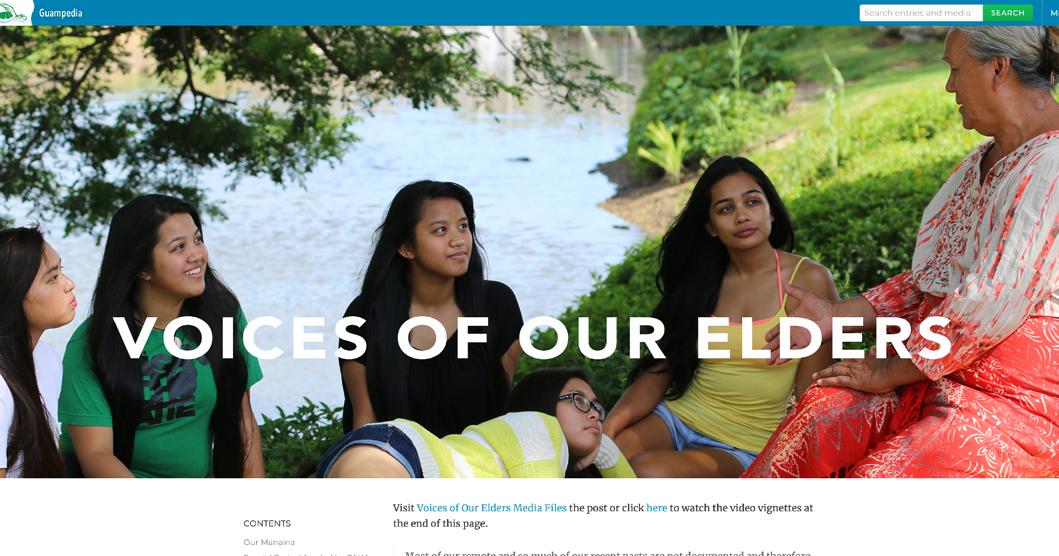
13
Voices of Our Elders Media
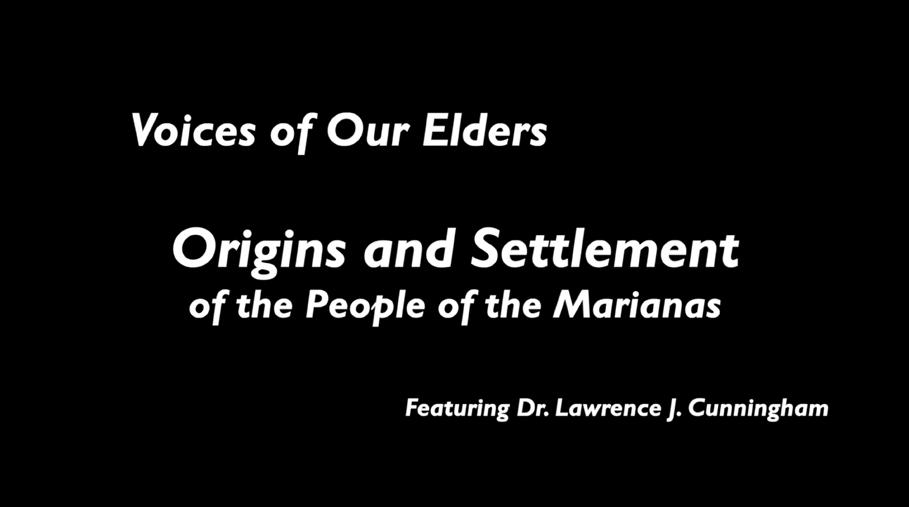

14
Speaker Joaquin C. Arriola Videos


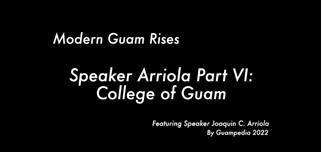



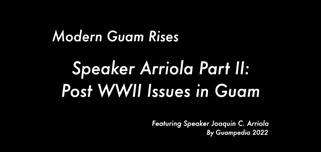


15
Joaquin “Kin” C. Arriola
A Leader in Guam’s Postwar Era
May 2022 Newsletter
Joaquin “Kin” C. Arriola (1925 – 2022) a prominent figure at the forefront of Guam’s legal history, passed away May 4. Arriola, familian Arrot, was born to Vicente F. and Maria S. Arriola in 1925. In 1954, Arriola married Elizabeth Perez Arriola and together they had eight children–three daughters (Jacqueline, Anita, and Lisa) and five sons (Vincent, Franklin, Michael, Joaquin Jr., and Anthony).
Arriola was one of Guam’s leaders who took part in making the island what it is today. Guam’s current form of limited self-government took decades of vision, calls for justice, and tenacity by local leaders such as Arriola. These leaders caused the transformative social, political, economic, and other changes of the 1950s and 60s, that led us to where we are today.
In the 1940’s and right after high school, Arriola earned
a law degree. Becoming the second CHamoru/Chamorro, to do so. Returning home, Arriola ran for Senator in the Guam Legislature, becoming the top vote-getter in three elections and serving for two terms as Speaker. As Speaker, Arriola had two primary goals— advancing Guam’s political selfgovernance through the creation of a locally elected governor and delegate to Congress, and the reunification of the Mariana Islands. Despite not being able to bring together Guam and the Northern Marianas Islands, Arriola was pivotal in ending 20 years of Guam’s governors being appointed by the President in 1968, and in securing for Guam a delegate to the United States Congress in 1972.
Arriola was also deeply dedicated to the island’s education system, serving as Chairman of the Board of Regents for the College of Guam (1963-1966), predecessor to the University of Guam. Arriola saw that the people of Guam needed some level of independence, something of their own to be proud of, and an institution that

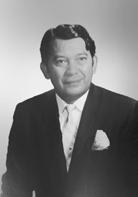
would produce good teachers locally instead of contracting them year after year from the mainland at great expense.
Friends and family would know Arriola was also a gifted musician, playing the church organ and piano. His musical talent helped him earn the money to pay for his higher education in Minnesota. After the occupation, he played in a band called Talo’fo’fo Five.
Laughingly, Arriola stated that it was a great name which caught people’s attention despite, or perhaps to some degree because, there were only four members of the band, none of whom were from Talo’fo’fo.

There were not many lawyers on the island at the time of his return, so Arriola soon found himself busy taking cases and established what is now known as the Arriola Law Firm, Guam’s oldest law office. Aside from his time as a senator, Arriola served as Chairman of the Territorial Planning Commission, the Guam Housing and Urban Renewal Authority (GHURA), the Board of Regents, the

16
Photos of Arriola in the Guam Legislature (1955-1959 & 1967-1971)
Continued on Page 3
Guampedia
Newsletter, May 2022 | Page 2
Joaquin “Kin” C. Arriola
A Leader in Guam’s Postwar Era

Joaquin “Kin” C. Arriola (1925 – 2022) a prominent figure at the forefront of Guam’s legal history, passed away May 4. Arriola, familian Arrot, was born to Vicente F. and Maria S. Arriola in 1925. In 1954, Arriola married Elizabeth Perez Arriola and together they had eight children–three daughters (Jacqueline, Anita, and Lisa) and five sons (Vincent, Franklin, Michael, Joaquin Jr., and Anthony).

17
Moving Forward
Complete production of following oral history interviews:
• CHamoru Cultural Values by Toni Malia Ramirez
• Chaguian Massacre Survivor by Francisco Williams
• Trust Territory of the Pacific by Tobias Aguon

• Nobena Tradition by Pale’ Eric Forbes & Pangelinan Family.

18
Milestones:
for 4000 Years -

4. MicrONEsia
Voyaging
Educational Outreach - Lumuhu Description: Work with PATA MicrONEsia network to cultivate regional content for use in Guampedia’s Micronesia Milestones and throughout our site. Goal: Raise awareness, develop regional relationships, develop new regional content for Guampedia to support student engagement and their social and emotional wellbeing. 19
Member Highlight
Guampedia.com: Cultivating Connections Through Education
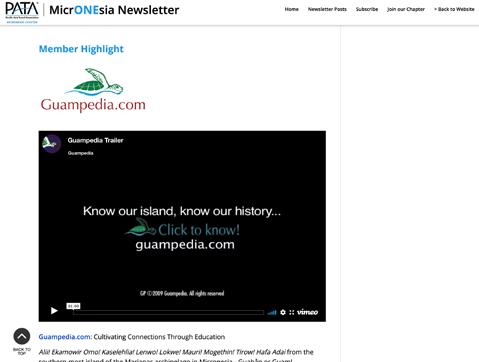
and continue the work of healing our damaged planet. Doing so helps us realize a more peaceful, just and sustainable world. Guampedia’s mission aligns with and supports UNESCO’s goal to ensure inclusive and equitable quality education while promoting lifelong learning opportunities, all key to realizing sustainable development!
Guampedia exists to provide a comprehensive, freely accessible educational resource for the local, regional and global community. The primary objectives of the Guampedia project revolve around education, preservation, and access. As an online educational resource – we strive to accurately describe and place the islands’ vast heritage in the local and global consciousness – executing strategies to create resources and programs of quality and integrity through which current and future generations can document and preserve their multi-faceted cultural heritage.
Knowing our collective past, knowing where we’ve come from in our journey as a people is ingrained in our cultural heritage across Oceania. This collective island wisdom is based on more than 3500 years of “research and development,” sustaining the indigenous seafaring cultures of our Micronesia region. Understanding our past and learning from it helps us navigate our way into the future while strengthening education and teaching sustainability! As a community-based project, it also reflects Guam’s collective commitment to strengthening education as a local and global common good!
Alii! Ekamowir Omo! Kaselehlia! Lenwo! Lokwe! Mauri! Mogethin! Tirow! Hafa Adai from the southern-most island of the Marianas archipelago in Micronesia - Guahån or Guam!

Guampedia is truly honored to be a part of the PATA Micronesia Chapter since 2017, supporting the region, promoting its rich cultural heritage and landscapes, and cultivating connections through education and online access. For the past 14 years guampedia.com has been making historical and culturally relevant content accessible across the globe. It is truly a community project, as a non-profit organization and program affiliate of the University of Guam, Guampedia’s operations have been funded by the Government of Guam through its Tourism Attraction Fund, and its content development through grants and donations.
When the United Nations adopted the 2030 Agenda for Sustainable Development in 2015, the international community recognized that education is essential for the success of all of its 17 sustainability goals. Education is one of the key ways we address inequality, exclusion
Guampedia’s visitor statistics is a testament to the need for culturally relevant educational resources and islander-centered historiography online. Since 2014, Guampedia has maintained about 25,000 unique visits per month reaching a new milestone of 100,000 visits in March 2019. About 50% of visitors are from the continental US, with 30% from Guam and the other 20% from the Northern Marianas, Philippines, Japan, South Korea reaching places as far as the United Kingdom. In 2021, Guampedia hosted 400,000 site visitors translating to about 33,000 unique visits per month. Some of Guampedia’s top visitor locations include Guam, Quezon City, Los Angeles, Seattle, Davao City, and Las Vegas.
Since the onset of the COVID pandemic in 2019, Guampedia accelerated its efforts in fostering a culture of connecting - in particular for providing island youth and educators access to culturally relevant programs and resources from text with photographs to knowledgeable voices of elders who have lived through these events. Such culturally relevant resources strengthens connections to the island’s unique sense of place while
20
fostering stewardship in preserving and promoting our mission.
With about 1200 written entries to date peer-reviewed and fact-checked, and more than 3500 images, and numerous Epublications, students and educators are able to reference these entries as reliable source materials.
More than 150 people have been involved in this ongoing, dynamic project which is updated and added to regularly as events unfold and technology allows.

In fact, since 2015, we have been working to expand our content into Micronesia, especially with the composition of Guam’s classrooms having approximately 20% of students from greater Micronesia.
When Guam was gearing up to host the 12th Festival of Pacific Arts, we wanted to prepare our local community for this event. We received grant funding from the Guam Council for the Arts & Humanities Agency for the special section, People of Pacific Cultures or P.O.P. Cultures! Featuring a regional map of Polynesia, Melanesia and Micronesia, it contains entries of the islands; introducing other islands in the Pacific and reminding our local students how Guam is very much a part of Micronesia.
In 2019 we were officially endorsed by Guam’s Public School Board as an educational resource in the classroom. We created the Educator’s Portal.
We currently have about 80+ lesson plans focused on connecting past to present and future; We were able to add on 15 lesson plans within the Micronesian context, such as this one on Understanding the Culture and People of Micronesia.
In 2019 we created the Micronesia Milestones Timeline, featuring the histories of the islands in our region and juxtaposing with world events. It spans 4000 years and our intent is to add more milestones as we build our network throughout the region. The interactive aspect of the timeline are the links to relevant Guampedia entries. Our Board director, and UOG assistant professor Terry Perez, produced this lesson plan for the timeline - Connecting Personal History to the Histories of Others.

Finally, in an effort to promote and connect intergenerational transmission of cultural knowledge, we created the Voices of Our Elders. This section helps to preserve our oral tradition and fosters the teaching of cultural values and history through the lives of those who lived through these very events. In 2020, we started interviewing elders from the Republic of Palau and the Federated States of Micronesia, and again like the Micronesia Milestones Timeline, we want to continue incorporating voices of our elders throughout Micronesia. Click on the following link to view Dr. Larry Cunningham’s perspective on the settlement and origin of the Chamorro/ CHamoru people of the Marianas.
Our Micronesia region features amazing one-of-a-kind natural wonders - from the unique formation of Chuuk’s lagoon, Belau’s Rock Islands, the Marshall’s largest atoll in the world, to the deepest ocean in the world, right here in the Marianas! Our region is also rich in history, deeply rooted in cultural heritage, and we have 3500 years of island wisdom to help our global society chart a course towards sustainability! Biba MicrONEsia!
21
PATA MicrONEsia Pearls of Wisdom Series
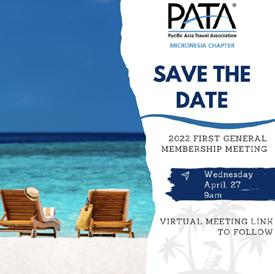
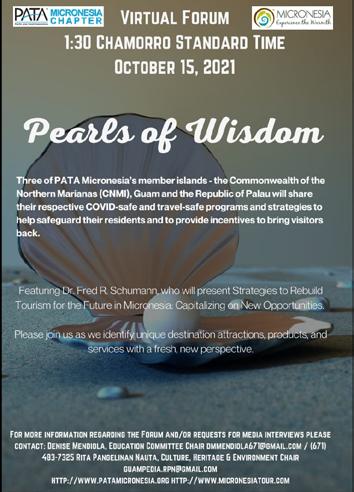
Cultural Heritage & Environment Committee Navigating Recovery: With Pearls of Wisdom and Culture of Care
With the challenges and uncertainties amplified by the pandemic, especially as surges continue to unfold, our Committee has been focused on what we do know and what we have, to help us navigate recovery towards a sustainable shared future! Throughout MicrONEsia, we are small communities where island wisdom or pearls of wisdom is framed with a way of knowing and a way of doing. This culture of care comes with an understanding of our islands’ cultural heritage and histories.
To serve as a source for guidance in navigating towards a post-pandemic voyage to recovery, our PATA Micronesia Chapter’s Education, Marketing and Cultural Heritage and Environment committees presented the Pearls of Wisdom speaker series. In our first program, we featured Dr. Fred Schumann, a local professor of tourism from the UOG School of Business & Public Administration. With his extensive experience in regional tourism and global marketing, Dr. Schumann honed in on our islands’ cultural landscapes and heritage stories to serve as inspiration for cultural products and services that will give visitors touch points to experience Micronesia’s unique sense of place and cultural heritage.
Our second Pearls of Wisdom program featured Dr. David Sanchez from Micronesia and rooted in the Marianas. An Assistant Professor in the University of Pittsburgh’s Civil & Environmental Engineering department, Dr. Sanchez also serves as the Associate Director for the Mascaro Center for Sustainable Innovation. Dr. Sanchez shared perspectives on Micronesia’s strengths and challenges in its natural and built environment and how its rich cultural heritage can serve as a source of inspiration for identifying sustainable designs on a local and regional scale.
This global pandemic has changed the course of humankind at so many levels. The isolation that we all experienced in one way or another, has truly helped
us, willingly or unwillingly, to look from within. Like our ancestors who came before us, it is our responsibility to rethink who we are in terms of our cultural values and utilize them to address challenges and collectively advance the quality of life within our ecosystems.
Within this culture of care framework, let’s connect through partnerships, listen with respect, adapt where necessary, and sustain best practices. Building the capacity of our community within our unique spaces, whether as members of an academic, business, government or social enterprise, is also a great strategy to shift mindsets back to a truly interconnected community that exudes a culture of care that will yield extraordinary results towards regional and global sustainability!

22
Island Wisdom PWO Ceremony

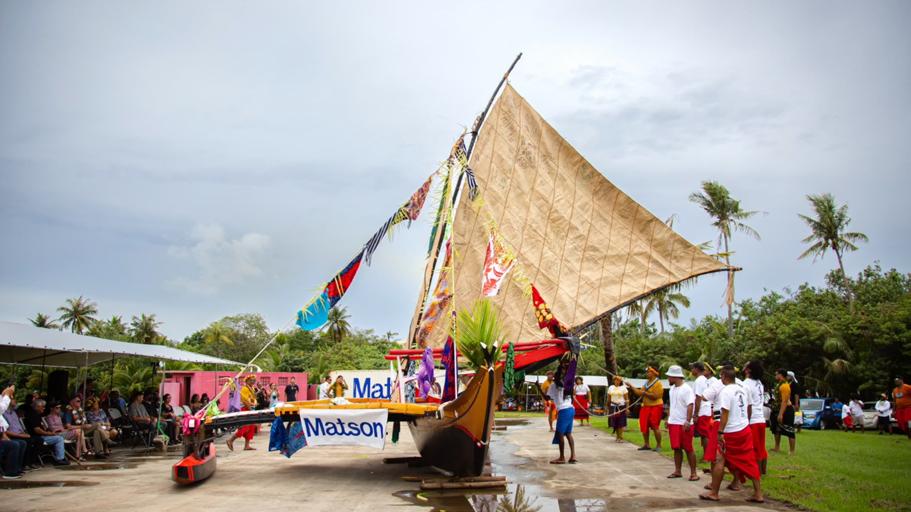
23
2nd Pacific Preservation Summit





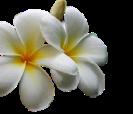


















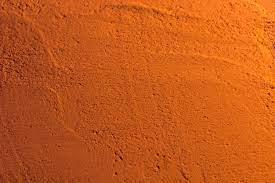
















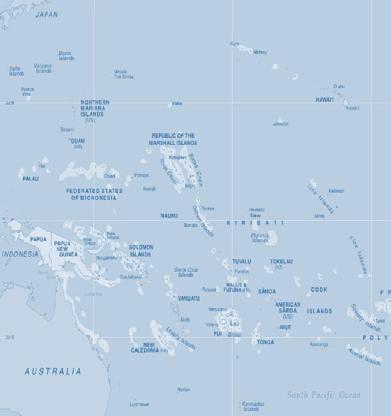
From May 24 to May 26, the Guam Preservation Trust hosted their 2nd Pacific Preservation Summit . This year’s theme, “Technology Empowering Cultural Heritage,” brought together hundreds of academics, researchers, professionals, and cultural practitioners from around the Pacific to share their work in the preservation of their people’s history, culture, and traditions. This three day event began with a keynote address by Pale’ Eric Forbes at the Antonio M. Palomo Guam Museum. Afterwards, participants engaged in a series of breakout sessions where they could attend informational lectures from among 20 presenters in the field of preservation. These presentations were held in sites throughout Hagåtña, encouraging participants to explore our island’s capital.
On day two, participants were welcomed back to the Guam Museum where Joseph D. Franquez gave the keynote address on “How to protect the heritage of our past with the advances of technology.” Afterwards, participants were invited to experience the southern part of Guam at the Valley of the Latte. Day three began with remarks from Adelina K. Jose, Consul General of the Palau Consulate, and a keynote address from H. Larry Raigetal. This three day summit was then concluded with a site visit of the Traditions Affirming our Seafaring Ancestry (TASA) Canoe Hut at the Paseo de Susana. Click here to watch the keynote addresses of each day at the Pacific Preservation Summit.

HAll Are Welcome! Registration is FREE! Come join us in Guam as we bring together heritage preservation professionals, advocates communities to the 2nd Pacific Preservation Summit and collaborate each other on how to protect the heritage of our past with the advances in Feel free to contact us at 1 671 472 9439 or email jqpreservation@guam.ne 2nd Register Today! www.pacificpreservation.org/2022
24
2nd Pacific Preservation Summit
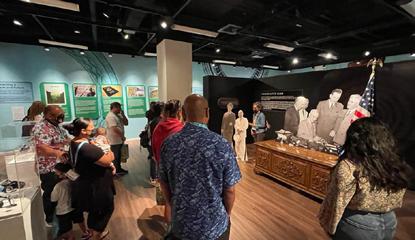
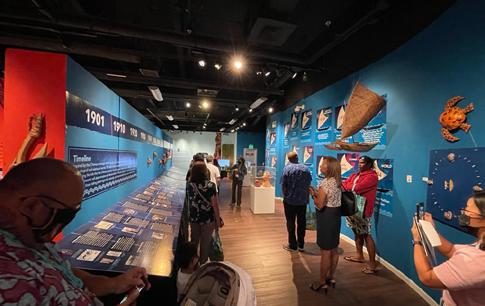
Guampedia’s Culture of Connecting Youth: Education, Preservation, Access

Guampedia’s mission is based on the belief that the future of our island is dependent upon an informed, educated citizenry. Scarce resources result in limited opportunities to learn and understand Guam’s unique history, culture, environment and present-day society. Guampedia exists to provide a comprehensive, accessible resource that will educate the global community and increase opportunities for the enlightenment of our people, allowing us to chart our destiny.
The Guampedia project revolves around education, preservation and access. As an online educational resource - we strive to accurately describe and place the island’s vast heritage in the local and global consciousness - and execute strategies to create resources and programs of quality and integrity through which current and future generations can document and preserve the multi-faceted history and cultural heritage. Providing our island’s youth access to culturally relevant programs and resources from text with photographs to knowledgeable voices of elders who have lived through these events can help to strengthen their connections to Guam’s unique sense of place, fostering stewardship in preserving sites and transmitting stories to agency in charting our destiny.

25
PIFA Milestones


26
Moving Forward
PATA MicrONEsia Regional Outreach

Production of MicrONEsia:
Voyaging for 4000 Years Vignettes featuring Master/Grand Master Navigators.

•
•
27
5.
Marianas History Conferences
Makmamao
Description: This conference brings scholarly research about Chamorros/CHamoru to

Besides the conference
e-publications that
The conference also encourages relationships between
-
the public.
itself, the work presented is used to create
can be viewed on the Guampedia website.
Marianas scholars. Goal: 5th and 6th bi-annual conference organization and production of e-publication and outreach (2021 Guam, 2023 Saipan) and to engage college-level student participation in both presenting and attending. 28
5th Marianas History Conference E-Publications

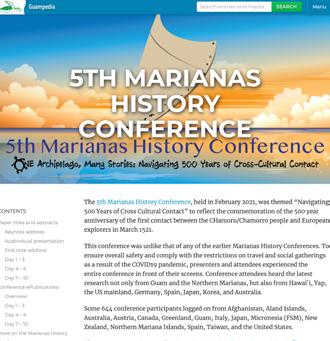
As the 5th Marianas History Conference, held in February 2021, was unlike that of any of the earlier Marianas History Conferences, so too was the production of the e-publication now available online in Guampedia. Due to the pandemic, this virtual conference reached milestones, from hosting 644 conference participants and 66 presentations over nine days. The E-Pub, set forth in four booklets, reached a milestone of its own, featuring 56 presentations - with papers, videos, and/or audiovisual exhibits from this conference’s presenters and guest speakers. Here are some highlights of those presentations:
Navigating Cultures; Seafaring Returns. As part of their efforts in revitalizing traditional seafaring to the CNMI, the Northern Marianas
Humanities Council present a short film documenting this movement fueled by a cultural collaboration between Chamorro and Refaluwasch sailors and boat builders in perpetuating the knowledge of their ancestors with the next generation of Pacific peoples.

Origins of the People of the Mariana Islands: Ancient DNA Research and Archaeological. Dr. Rosalind Hunter-Anderson and Joanne Eakin present preliminary results of collaborative research by archeologists and geneticists that show how Marianas archaeological context and DNA results interrelate, challenging a failing narrative of CHamoru/Chamorro population origins in the Philippines.
In Guampedia In Issuu In Vimeo

29
November 2021 Newsletter

5th Marianas History Conference E-Publications
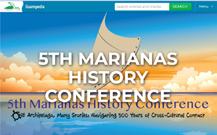
As the 5th Marianas History Conference, held in February 2021, was unlike that of any of the earlier Marianas History Conferences, so too was the production of the e-publication now available online in Guampedia. Due to the pandemic, this virtual conference reached milestones, from hosting 644 conference participants and 66 presentations over nine days.

The E-Pub, set forth in four booklets, reached a milestone of its own, featuring 56 presentationswith papers, videos, and/or audiovisual exhibits from this conference’s presenters and guest speakers. Here are some highlights of those presentations:
Navigating Cultures;Seafaring Returns

As part of their efforts in revitalizing traditional seafaring to the CNMI, the Northern Marianas Humanities Council present a short film documenting this movement fueled by a cultural collaboration between Chamorro and Refaluwasch sailors and boat builders in perpetuating the knowledge of their ancestors with the next generation of Pacific peoples.
Origins of the People of the Mariana Islands: Ancient DNA Research and Archaeological
Dr. Rosalind Hunter-Anderson and Joanne Eakin present preliminary results of collaborative research by archeologists and geneticists that show how Marianas archaeological context and DNA results interrelate, challenging a failing narrative of CHamoru/Chamorro population origins in the Philippines.
I Hinanao-ta,500 Aňos (Our Journey,500Years)
Magellan’s circumnavigation was the beginning of documented histories of the people of the Mariana Islands. For the 500th commemoration, young CHamoru/Chamorro scholars, Manuel Cruz, Artemia Perez, Lazaro Quinata and Juan San Nicolas present their exhibition narrative, I Hinanao-ta: Our Journey, a step towards the world knowing who CHamorus/Chamorros are from CHamorus/Chamorros themselves.
30
Guampedia is a non-profit affiliate of the University of Guam with operations funded by the Government of Guam’s Tourism Attraction Fund.
Moving Forward

MHC 2023 Planning and Implementation
Production of 6th MHC E-Publication.

• 6th
•
31
6. Developing User Surveys & Profiles - Mananaf
Description: Our current user survey targets two primary audiences: educators/students and those seeking to understand Chamorro/Chamoru cultural heritage and identity. The survey results need to be translated into a planning tool for content development and community outreach.
Goal: Use survey results to guide us in planning, followed by promotions and outreach efforts to encourage website visitors to take the survey. This will lend to the planning and development of new content, formatting and delivery to engage visitors with learning opportunities through the website.

32
User Surveys

own lessons or class activities.
The shift to this virtual format allowed us to improve various aspects of the physical exhibition. Content was reorganized to take advantage of online tools to make the exhibition easier to understand, and for visitors to view specific content or to just go through it at their own pace. The narratives from each section have been reformatted to link various people, events, and ideas to existing entries already found on Guampedia. This gives both teachers easy access to more content to tie into lessons and students the ability to explore key terms advancing their understanding of the narratives. The two timelines of self-determination efforts in Guam history and World history featured in the physical exhibition have been combined into one cohesive section that illustrates the breadth of this political struggle as it has unfolded over more than 100 years.
Click here to view this new virtual exhibit and explore our island’s history towards self-determination.

Historical Highlight
On Septermber 2, 2001, the Honorable Peter Charles Siguenza, Jr. became the first Chief Justice of the Supreme Court of Guam. Born in 1951, Siguenza graduated from Father Duenas Memorial School and earned his BA in Government from California State University. In 1980 the future judge obtained a law degree from the University of the Pacific McGeorge School of Law in Sacramento, California, where he also served as President of the Asian Law Student Association from 197778.

Siguenza began his legal career as an attorney with Guam Legal Services and then was hired by Klemm, Blair & Barusch. Over the years he accepted a number of judicial appointments including Designated Judge in the District Court of Guam, Designated Justice in the Supreme Court of the Federated States of Micronesia, Associate Justice in the Supreme Court of Guam, and finally Chief Justice. Considered an “unconventional” judge by many of his peers, Siguenza served during some of the most tumultuous times in Guam’s court history. His work to re-establish the Supreme Court of Guam and forge a Unified Judiciary is part of the legal legacy he left behind.
Click here to read more about the Hon. Peter Charles Siguenza Jr. and here to read about the history of the Guam courts
Come And Visit Us

We want to hear from you! Visit our informational booth and learn more about Guampedia and our educational outreach project, Culture of Connecting. Fill out our survey, fan, and help us improve and expand what Guampedia has to offer! Free gifts will be availbale for survey participants.
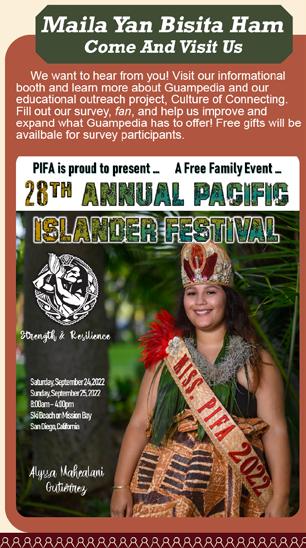 Maila Yan Bisita Ham
Continued
Maila Yan Bisita Ham
Continued
from Page 1
Honorable Peter C. Siguenze in Chambers, February 1997.
Photo by Eduardo C. Siguenza. Family Collectio
Guampedia Newsletter, September 2022 | Page 2 33
Survey Reward: Postcards


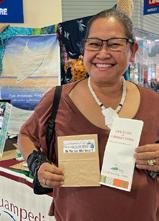
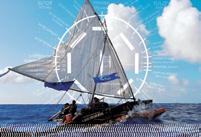
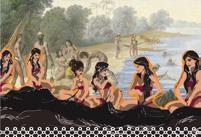
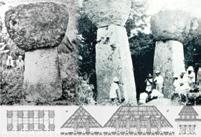

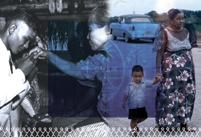
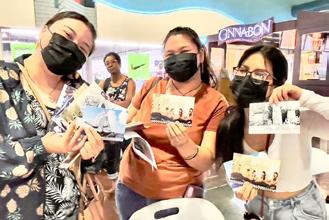
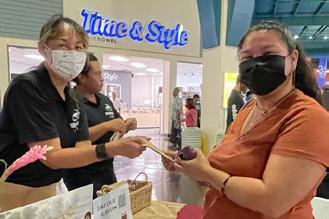
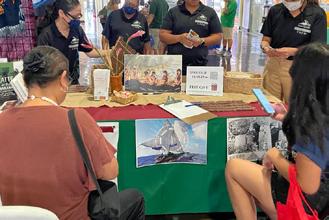

34
PIFA Survey Takers


35
Moving Forward
Outreach:
Festival
Marianas

Village Tour

• Chamorro
• Friends • Familia • Northern
• Guam
36
7. Collaboration with UOG Press
Semu

Description: Guampedia was asked to assist UOG Press with research, identification and procurement of images for the Guam DOE Social Studies Book series for K-5th. Guampedia was also asked to develop online resources to accompany the books and to assist with professional development training for educators for this program.
Goal: Provide historical images for this book series, develop online content to compliment the books and support efforts to train educators to use these materials.
-
37
Assisting

UOG Press • Inquiry: UOG Press emails Guampedia a media (photo/ illustration) inquiry (i.e. origin and copyright). • Research: Guampedia reviews the media in question, researches the information of the media, and relays the information to UOG Press. • Copyright: Media from private collections, Guampedia contacts or connects with the copyright holder for UOG Press. • Provide Media: Guampedia will provide UOG Press with requested media if copyright is released. 38
Moving Forward

•
Continued assistance with images upon request.
• Once books have been completed, collaboration with UOG Press to supplement book with relevant online resources.

39
8. Collaboration with CAHATenhos
Description: Guam CAHA will team up with Guampedia to assist artists and cultural producers registered with CAHA to develop online presence in Guampedia.
Goal: Work with CAHA to develop programming and outreach initiatives to profile and highlight artists and promote cultural and creative industries and to support and engage young up and coming artisans.

40
Gifts on Guampedia


December is here and, in no time, it will be Christmas! We here at Guampedia wanted to share some of our customer favorites and unique finds on our online gift shop! Guampedia’s online gift shop offers an array of products made by cultural producers and a selection of books written by local authors. We invite you to visit our online gift shop here for unique gifts this holiday season.



Famalao’an Guåhan
This book features profiles of 28 amazing women who have “made their mark” or had an impact on Guam history. Famalao’an Guåhan is a resource that will inspire and motivate people to remember and learn from the past, and to collect stories about the important women – and men – in their lives.
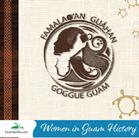
The Rope of Tradition


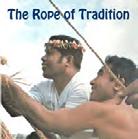

Body Ornamentation and Jewelry by Mama Jill
From handmade hair picks made of marlin tail, to unique spondylus shell and crystal earrings, you do not want to miss out on handcrafted pieces by Chamorro/CHamoru Master CarverBody Ornamentation artist Jill Benavente, lovingly known as “Mama Jill.” Mama Jill’s pieces are great accessories for both day and evening wear for any holiday event.
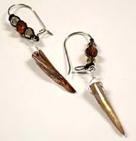 The Rope of Tradition was written by Saipan Carolinian Lino M. Olopai with the assistance of cultural anthropologist Dr. Juliana Flinn. It describes Mr. Olopai’s journey in finding a balance between the traditional ways in which he was raised and the evolving demands of our world today.
Guampedia
The Rope of Tradition was written by Saipan Carolinian Lino M. Olopai with the assistance of cultural anthropologist Dr. Juliana Flinn. It describes Mr. Olopai’s journey in finding a balance between the traditional ways in which he was raised and the evolving demands of our world today.
Guampedia
Newsletter, Deccember 2021 | Page 3 December 2021 Newsletter 41
Guampedia Heritage Gift Shop

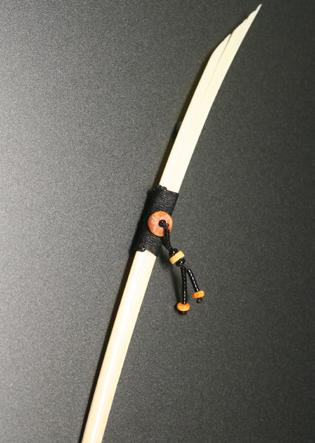

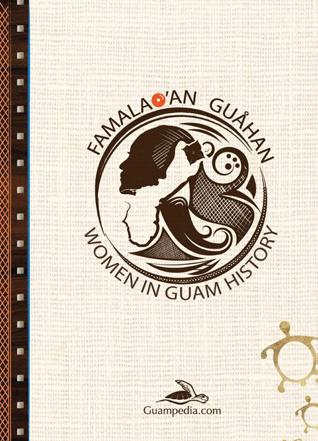
42
February 2022 Newsletter
Over 130 Pages of Latte

The Latte in the Marianas project, made possible by Ayuda Foundation, the Guam Preservation Trust, Humanities Guåhan, the Northern Marianas Humanities Council, the Guam Tourist Attraction Fund, Nihi Ta Fanhasso’ Cultural and Historical Consulting, Kaleidic Design, and Micronesian Heritage Consulting, LLC, just launched the publication entitled, Latte in the Marianas. The book features 130 pages of latte through wisdom handed down over generations, photographs, oral histories, archeology, latte-inspired art, poetry, chants, and songs, as well as community heritage initiatives.
The book is both a vivid and beautiful oversized coffee table book as well as a compilation of single and double-page entries written by highly regarded cultural practitioners, historians, archeologists, and historic

preservationists who have been part of the Marianas’ cultural renaissance and have years or decades of expertise and experiences to share.

Latte have become an iconic symbol of CHamoru/Chamorro identity and the ingenuity and skill of their ancestors. At the same time, while there is a substantial amount of academic material on latte, there are few books written about latte for the community. The Latte in the Marianas is truly by the community, for the community, with over 80 voices from throughout the archipelago and elsewhere.
Directed by Drs. Kelly Marsh (Taitano) and Jolie Liston, the Latte in the Marianas project have graciously partnered with Guampedia to sell copies of the book with proceeds going towards sustaining Guampedia’s cultural and historical work.

Pre-order Latte in the Marianas
Guampedia will be publishing the Latte in the Marianas book next month, offering a pre-order sale promotion up until March 12, 2022 (CHST)!


Visit Guampedia’s online heritage gift shop to pre-order the Latte in the Marianas and save $15.
Shipping will be an additional cost for off-island orders.

43
Guampedia is a non-profit affiliate of the University of Guam with operations funded by the Government of Guam’s Tourism Attraction Fund.
Latte in the Marianas
The Latte in the Marianas project, made possible by Ayuda Foundation, the Guam Preservation Trust (GPT), Humanities Guåhan, the Northern Marianas Humanities Council, the Guam Tourist Attraction Fund, Nihi Ta Fanhasso’ Cultural and Historical Consulting, Kaleidic Design, and Micronesian Heritage Consulting, LLC, just launched the publication entitled, Latte in the Marianas. The book features 130 pages of latte through wisdom handed down over generations, photographs, oral histories, archeology, latte-inspired art, poetry, chants, and songs, as well as community heritage initiatives.
The book is both a vivid and beautiful oversized coffee table book as well as a compilation of single and double-page entries written by highly regarded cultural practitioners, historians, archeologists, and historic preservationists who have been part of the Marianas’ cultural renaissance and have years or decades of expertise and experiences to share.

Latte have become an iconic symbol of CHamoru/Chamorro identity and the ingenuity and skill of their ancestors. At the same time, while there is a substantial amount of academic material on latte, there are few books written about latte for the community. The Latte in the Marianas is truly by the community, for the community, with over 80 voices from throughout the archipelago and elsewhere.

Directed by Drs. Kelly Marsh (Taitano) and Jolie Liston, the Latte in the Marianas project have graciously partnered with Guampedia to sell copies of the book with proceeds going towards sustaining Guampedia’s cultural and historical work.

44
Latte in the Marianas Book

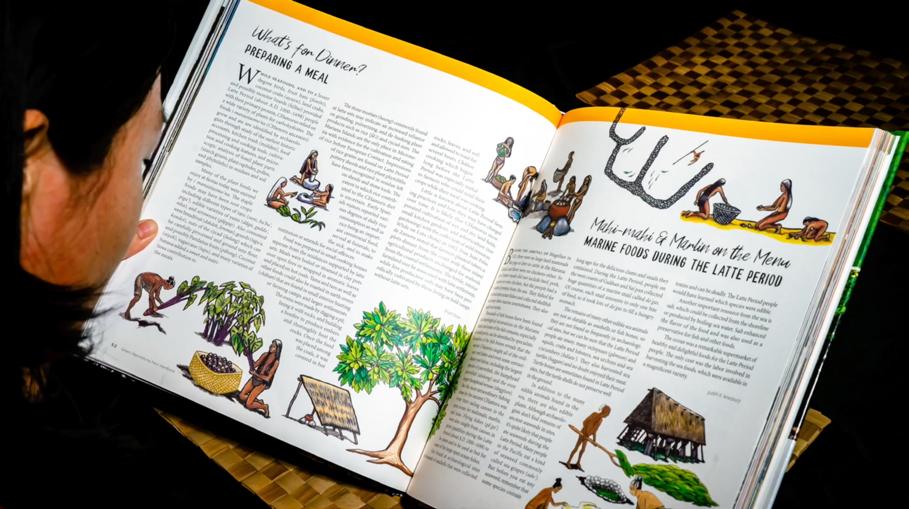
45
Moving Forward

Outreach:
Local & Regional Cultural Producers
Local & Regional Masters of Tradition

46
•
•
9.
Guampedia Gift Shop Outreach and PromotionLumamlam
Description: Assist Guam’s artists and cultural producers in accessing the online market through Guampedia’s gift shop.
Goal: Interview and write short bios on artists and cultural producers regarding their work by producing short videos showing their process and work outcomes. This effort will help to inspire youth to engage in cultural arts.

47
Guampedia Heritage Gift Shop & Cultural Producers

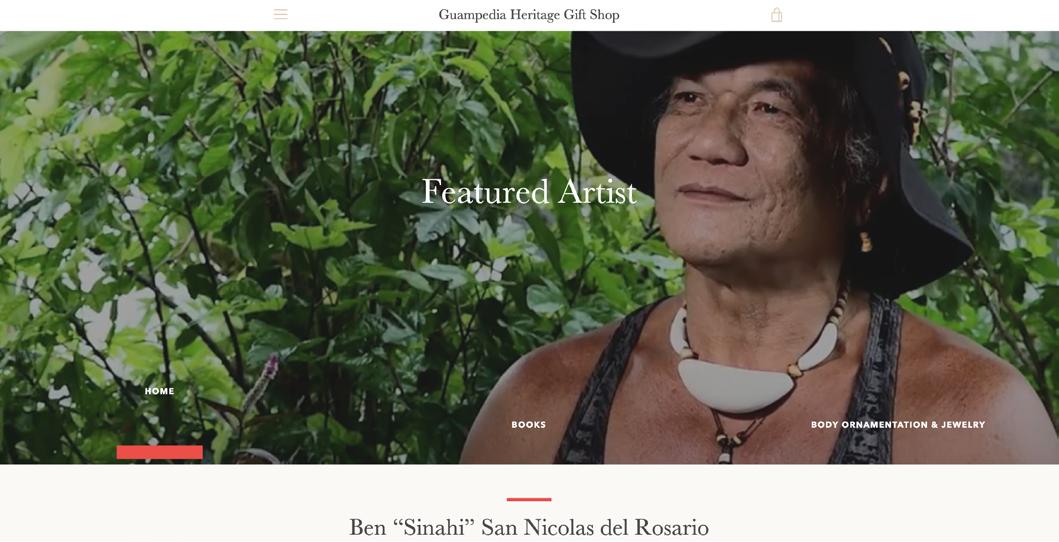
48
Ben “Sinahi” del Rosario

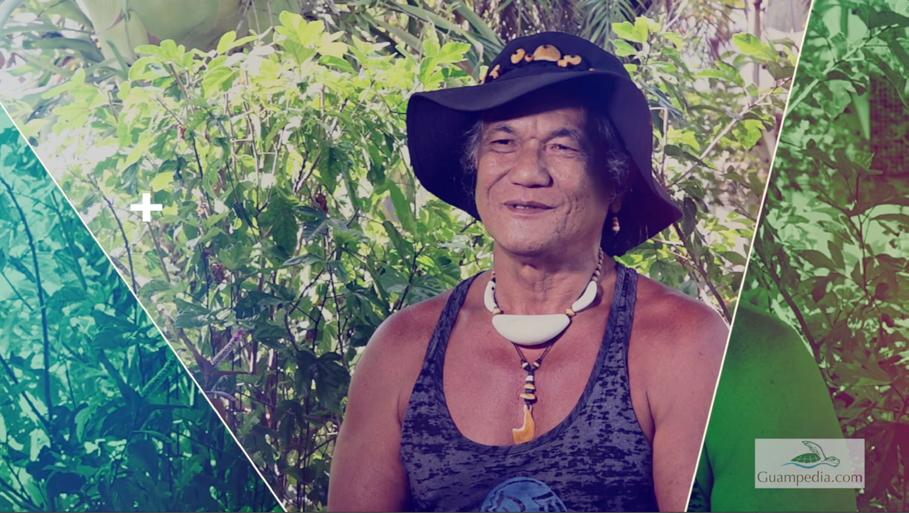
49
Guampedia Heritage Gift Shop New Design

Product page

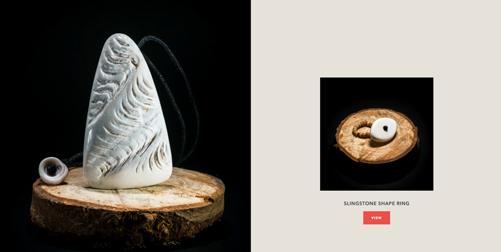
Frontpage
50
Cultural Artist Profile

Ben “Sinahi” San Nicolas del Rosario
March 2022 Newsletter
In the most widely accepted definitions of the word, art is anything purposely created that is meant to express and evoke emotions, feelings and ideas. Like other aspects of culture, art is influenced by the shared ideas and practices of a society. In other words, people create and respond to art based on meanings and ideas they learned in their culture.

Ben “Sinahi” San Nicolas del Rosario is a CHamoru cultural artist who specializes in creating traditional CHamoru ornamental pieces and jewelry. Among Guam’s visual artists, del Rosario has become known as one of the best creators of the sinahi, meaning “new moon,” a replica of an ancient artifact made of giant clam shell. He has consistently exhibited exceptional skill in shaping, polishing, and then drilling through each end of this
dense, brittle material without breaking or chipping it in the process.

Del Rosario was one of the pioneers of re-creating this CHamoru valuable, beginning with the renaissance of CHamoru traditional cultural expression through the visual arts in the early 1990s. He earned the name “Sinahi” through his efforts and continues to explore the icons and materials used by his ancestors, producing exquisitely-designed body ornamentation. His mediums include Tridacna gigas (giant clam) shell, Spondylus (oyster) shell, bone, wood and local fibers such as wild hibiscus bark.
Click here to watch a Guampedia Production vignette of del Rosario discussing the importance of culture in his art.
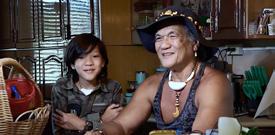
Pre-order Latte in the Marianas
Guampedia will be publishing the Latte in the Marianas book next month, offering a pre-order sale promotion up until March 12, 2022 (CHST)!
Visit Guampedia’s online heritage gift shop to pre-order the Latte in the Marianas and save $15. Shipping will be an additional cost for off-island orders.

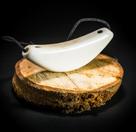
These, along with more of del Rosario’s pieces, will soon be availbale on Guampedia’s online heritage giftshop. In the meantime, click here to explore our current collection of body ornamentation pieces!
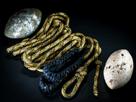
Guampedia Newsletter, March 2022 | Page 3
51
Cultural Artist Profile

Ben “Sinahi” San Nicolas del Rosario
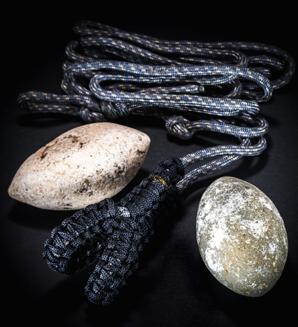
In the most widely accepted definitions of the word, art is anything purposely created that is meant to express and evoke emotions, feelings and ideas. Like other aspects of culture, art is influenced by the shared ideas and practices of a society. In other words, people create and respond to art based on meanings and ideas they learned in their culture.

Ben “Sinahi” San Nicolas del Rosario is a CHamoru cultural artist who specializes in creating traditional CHamoru ornamental pieces and jewelry. Among Guam’s visual artists, del Rosario has become known as one of the best creators of the sinahi, meaning “new moon,” a replica of an ancient artifact made of giant clam shell. He has consistently exhibited exceptional skill in shaping, polishing, and then drilling through each end of this dense, brittle material without breaking or chipping it in the process.
Del Rosario was one of the pioneers of re-creating this CHamoru valuable, beginning with the renaissance of CHamoru traditional cultural expression through the visual arts in the early 1990s. He earned the name “Sinahi” through his efforts and continues to explore the icons and materials used by his ancestors, producing exquisitely-designed body ornamentation. His mediums include Tridacna gigas (giant clam) shell, Spondylus (oyster) shell, bone, wood and local fibers such as wild hibiscus bark.
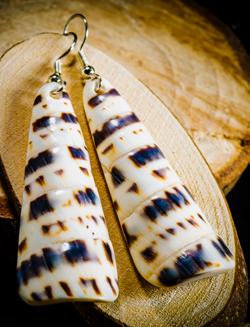
Click here to watch a Guampedia Production vignette of del Rosario discussing the importance of culture in his art.

52
Ben “Sinahi” del Rosario Pieces

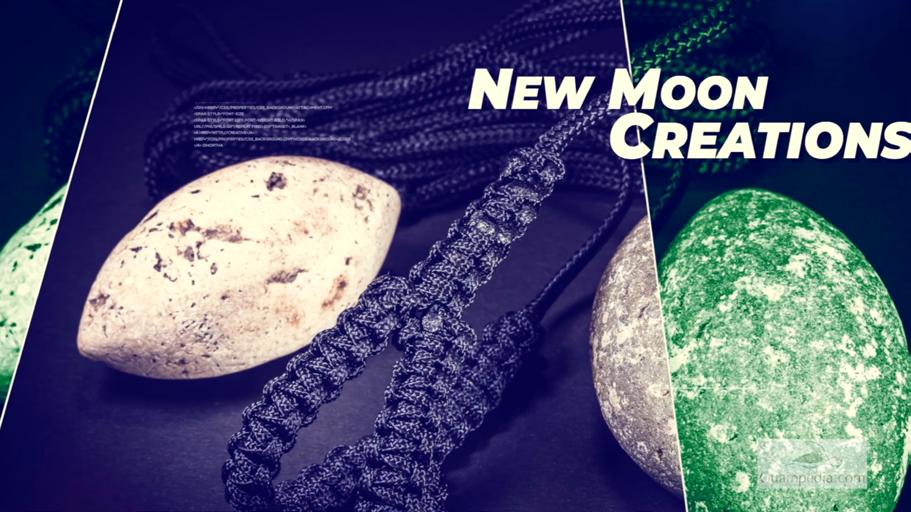
53
Moving Forward
Marketing & Promotions:
• Holiday & Social Media Campaigns featuring Cultural Producers and Artisans.


54

10. Collaboration with UOGFanggualo Description: Assist in the development of UOG’s programs: • Island Sustainability and degreed programs • Maila Tatti: Summer Programs, Roads Scholars, and Guam Study Abroad programs, targeting off-island Chamorros/CHamoru • Student Internship Program - UOG and Guampedia • Development and Coordination of a Chamorro/CHamoru-centric symposium and outreach for Chamorros/CHamoru. Goal: Work with UOG to develop and implement these outreach programs, promoting Guampedia content and value, and developing meaningful engagements that cultivate a culture of connecting to Guam’s history and cultural heritage in an effort to support recovery from cultural and historical perspectives. 55
August 2022

Newsletter
University of Pittsburgh Study Guam 2022


From July 29 to August 13, the University of Guam’s School of Engineering and Maila Tatte initiative under Senior Provost Dr. Anita Borja Enriquez partnered with Guampedia, as part of its Culture of Connecting educational project, to host eight students from the University of Pittsburgh’s Swanson’s School of Engineering, located in Pittsburgh, Pennsylvania. The summer of 2022 marked the second year of this program, Engineering Sustainable Design and Innovation in Island Nations: Guam, and was led by Associate Professor of Civil and Environmental Engineering at the University of Pittsburgh, Dr.

David Sanchez, a former resident of Yona.
The students were organized into three groups tasked with projects aimed at conserving and improving Guam’s water quality, assessing the potential for culturally and environmentally conscious infrastructure, and promoting and safeguarding the island’s traditional healing practices. Prior to their arrival on Guam, students attended weekly online classes during the Summer to learn about the unique connections between sustainability and other facets of life in Guam.
During their two-week visit, students were shown the full
breadth of island life through an intensive schedule that took them to government agencies, non-profit organizations, residential farms, University classrooms and so much more. Students had site visits to Maui Well, KEPCO solar farms, and Northern Water Treatment Plant. They were shown the abundance of Guam’s terrestrial and aquatic resources at the Guam National Wildlife Refuge in Litekyan, Valley of the Latte, and Asan Beach coral reefs. The impact of these resources on the island’s food production was explored through a tour of Continued on page two
56
Guampedia is a non-profit affiliate of the University of Guam with operations funded by the Government of Guam’s Tourism Attraction Fund.
University of Pittsburgh Study Guam 2022

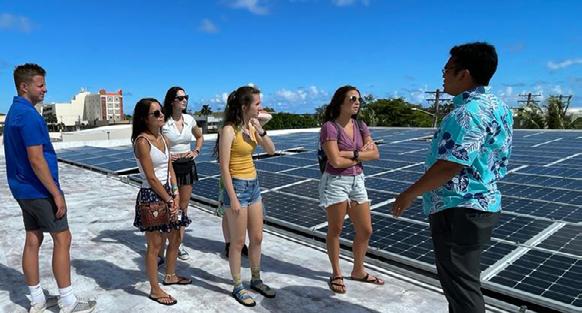
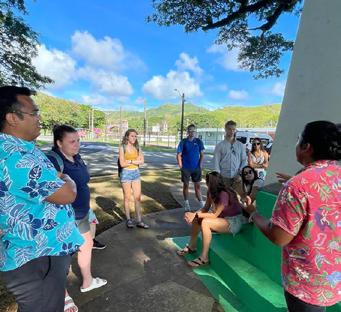


57
PIFA Highlights

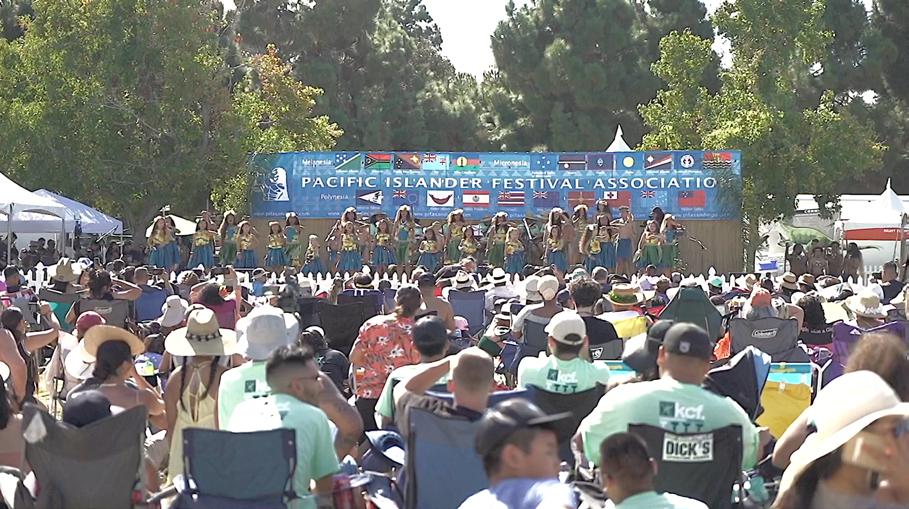
58
Moving Forward

Educational Outreach:

59
• NMI - Latte in the Marianas • Chamorro Festival • Island Wisdom - MicrONEsia • UPitt Study Guam 2023.
11. Collaboration with Department of CHamoru Affairs, Guam Museum - Sumongsong
Description: The Guam Museum asked for Guampedia’s assistance in the development of educational programming for the I Hinanao-ta exhibit and with developing a Guam Museum Saina/Docent Program.
Goal: To further develop these two programs with training for the Guam Museum staff on how to begin and move forward especially with engaging teachers and students.

60
Fanohge CHamoru Exhibition Educational Programming Tours


61
Welcome to the Guam Museum


62
Moving Forward

Education Program & Resources

Museum Field Trips with Guampedia
Hinanao-ta Exhibition Tours
63
•
•
• I
Collaboration with Commission on Decolonization, Guam Museum - Umayanggan

12.
Description: The Commission requested Guampedia’s assistance in developing educational outreach programs and resources, to include the development of a traveling and virtual exhibition on the history of Guam’s Quest for Self Determination with the Guam Museum’s Fanohge exhibition to include assistance with the installation of this exhibition.
Goal: Complete the exhibition and develop outreach and teacher/student engagement. Work with the Guam Museum to implement.
64
“Fanohge CHamoru Put I Tano’-Ta: Charting Our Collective Future” New Exhibition at the Guam Museum
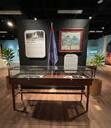

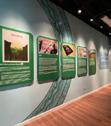
April 2022

Newsletter

The Senator Antonio Palomo Guam Museum and CHamoru Educational Facility and the Department of CHamoru Affairs announced the opening of “Fanohge CHamoru Put I Tano’Ta: Charting Our Collective Future” exhibition from March 29 through May 31, 2022. With curated images, objects and art work from the Museum’s collections and personal collections, the exhibition takes visitors through Guåhan’s (Guam’s) 125-year journey in the island’s quest for selfdetermination.
The exhibition draws inspiration from the words, “Stand Ye Guamanians,” from the Guam Hymn, the territorial anthem penned by Dr. Ramon Sablan, as well as the Inifresi, Guåhan’s pledge to protect our island’s environment and cultural resources written by Dr. Bernadita C. Dungca. The exhibition also incorporates artwork by CHamoru graphic artist and activist Kie Susuico. “Fanohge CHamoru” highlights the efforts by Guåhan’s leaders to forge a path toward greater selfgovernment and civil rights for the people of Guåhan under
American colonialism. It also encourages visitors to imagine and articulate a future that considers multiple viewpoints, interests, and aspirations of the island community as a whole, and opportunities to “picture” themselves in historic moments and alongside people that helped to chart this collective journey.
Dr. Kevin Escudero, a visiting scholar and Mellon/ACLS Scholars and Society Fellow at the Guam Museum from 20202021, coordinated the exhibition alongside Guampedia and other local partners. As part of his fellowship, Dr. Escudero was asked by Melvin Won Pat-Borja, Director of the Commission on Decolonization and President of the Department of CHamoru Affairs, to develop an exhibition on decolonization in Guåhan. The exhibition narrative was co-written by Dr. Kevin Escudero and Dominica Tolentino, the former Executive Director of the Guam Museum.
The exhibition’s design was co-developed by Odyessa San Nicolas, a CHamoru and Hawaiian graphic designer from Guåhan, and Rita P. Nauta, the Managing Director of Guampedia. The Guampedia
team responsible for the curation and set-up of the exhibition include Dominica Tolentino, Raymond D. Anderson, Delia C. Cruz, Aerial Dimalanta, Nathalie Pereda, Simon Sanchez III, Jodiann D. Santos, Burt Sardoma and Tom Tanner.
The exhibition is made possible with funding from the Guam Museum, Commission on Decolonization (COD), COD Free Association Task Force, Andrew W. Mellon Foundation, American Council of Learned Societies (ACLS), Brown University and the Governor’s Education Assistance & Youth Empowerment community grant. Special thanks to our community partners who donated the use of their artwork, including the 4th Grade Summer Reading Class from Wettengel Elementary School and their instructors, Dr. Judy Flores, Julie Benavente, Darren Cruz, and Traditions Affirming Our Seafaring Ancestry (TASI). For Museum reservations as well as a schedule of events and happenings, please call or email Leona Mendiola Young, Museum Administrator, at (671) 989-4455 or leona.young@dca. guam.gov.
Guampedia
Newsletter, Special Edition | Page 3
65
“Fanohge CHamoru Put I Tano’-ta: Charting Our Collective Future”

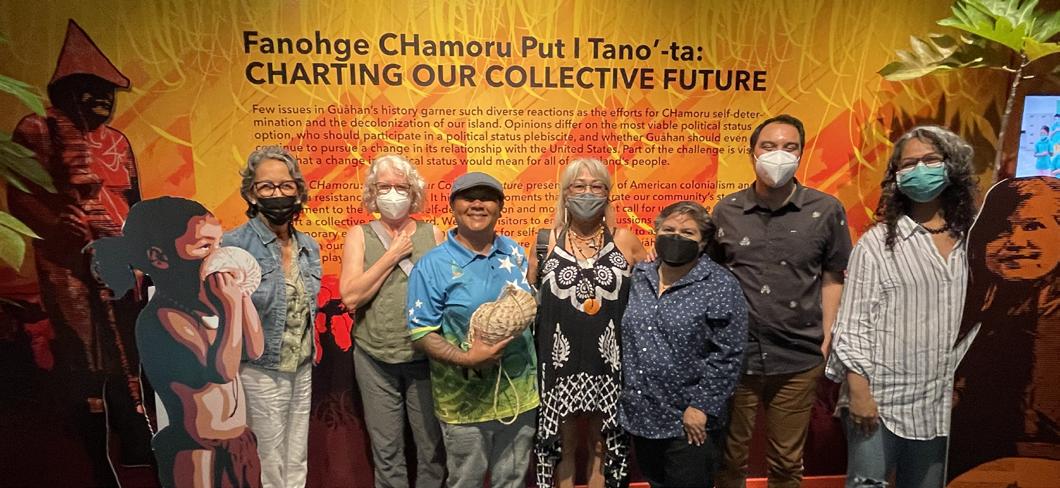
66
September 2022

Newsletter
Guampedia Launches First Virtual Exhibition



Bringing the Museum to the Classroom
This month, Guampedia is excited to launch its first ever virtual exhibition! Since Spring 2021, Guampedia, in collaboration with Dr. Kevin Escudero, an assistant professor of American Studies and Ethnic Studies at Brown University, curated and designed “Fanohge CHamoru Put I Tano-Ta: Charting Our Collective Future” for the Guam Museum and the Commission on Decolonization.This exhibition ran for nine weeks and was visited by numerous schools, communities, organizations, and individuals interested in learning about the political history of our island. Seeing the

impact of this exhibition and its potential for teaching and inspiring others prompted us to bring this exhibition from the halls of the museum to the virtual world.

This latest addition to our site presents all the narratives, videos, oral histories, and images of the exhibition within a new section on Guampedia, extending
“Fanohge CHamoru’s” lifespan and creating a new resource for educators to use in their classrooms. While it is no longer possible to visit the exhibition in person, it can still be experienced. During its run at the Guam Museum, the exhibition’s layout was mapped with 3D imaging to create a virtual tour. This new format allows visitors the chance to see the various panels, art pieces, and artifacts that were curated as part of the original layout. Teachers can guide entire classes through a virtual tour of the exhibition and tailor the tour to develop their
67
Guampedia is a non-profit affiliate of the University of Guam with operations funded by the Government of Guam’s Tourism Attraction Fund.
Continued on Page 2
Guampedia Launches First Virtual Exhibition Bringing the Museum to the Classroom
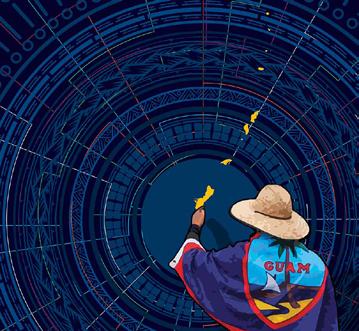
This month, Guampedia is excited to launch its first ever virtual exhibition! Since Spring 2021, Guampedia, in collaboration with Dr. Kevin Escudero, an assistant professor of American Studies and Ethnic Studies at Brown University, curated and designed “Fanohge CHamoru Put I Tano-Ta: Charting Our Collective Future” for the Guam Museum and the Commission on Decolonization.This exhibition ran for nine weeks and was visited by numerous schools, communities, organizations, and individuals interested in learning about the political history of our island. Seeing the impact of this exhibition and its potential for teaching and inspiring others prompted us to bring this exhibition from the halls of the museum to the virtual world.

This latest addition to our site presents all the narratives, videos, oral histories, and images of the exhibition within a new section on Guampedia, extending “Fanohge CHamoru’s” lifespan and creating a new resource for educators to use in their classrooms. While it is no longer possible to visit the exhibition in person, it can still be experienced. During its run at the Guam Museum, the exhibition’s layout was mapped with 3D imaging to create a virtual tour. This new format allows visitors
the chance to see the various panels, art pieces, and artifacts that were curated as part of the original layout. Teachers can guide entire classes through a virtual tour of the exhibition and tailor the tour to develop their own lessons or class class activities.
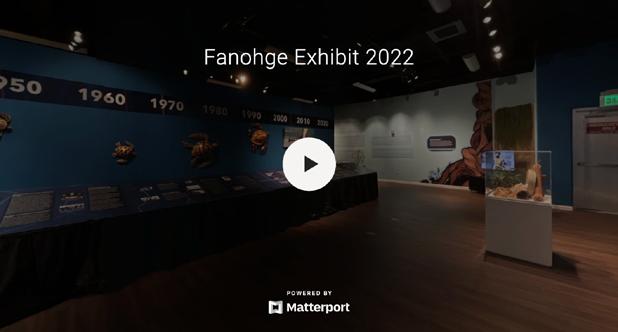
The shift to this virtual format allowed us to improve various aspects of the physical exhibition. Content was reorganized to take advantage of online tools to make the exhibition easier to understand, and for visitors to view specific content or to just go through it at their own pace. The narratives from each section have been reformatted to link various people, events, and ideas to existing entries already found on Guampedia. This gives both teachers easy access to more content to tie into lessons and students the ability to explore key terms advancing their understanding of the narratives. The two timelines of self-determination efforts in Guam history and World history featured in the physical exhibition have been combined into one cohesive section that illustrates the breadth of this political struggle as it has unfolded over more than 100 years.
Click here to view this new virtual exhibit and explore our island’s history towards self-determination.
68
Moving Forward

Production of lesson plans.

69
Collaboration: Hagåtña Restoration and Redevelopment Authority - Umagahaf

13.
Description: The authority requested assistance from
in developing
outreach resources on
and support the organization’s mission. Goal: Provide assistance as needed to implement this historical project to include research and
and participate in the
of
planning
Guampedia
educational
Hagåtña
identification
Hagåtña historical images
Authority’s
committee. 70
April 2022 Newsletter

2nd Pacific Preservation Summit

Technology & preservation will be the key focus at the 2nd Pacific Preservation Summit scheduled for May 24-26, 2022 at the Guam Museum and various locations in Hagatña along with tours to cultural sites around the island. The theme for the three-day summit is “Technology Empowering Cultural Heritage” or “TECH2022.”
The program will focus on the impact of available technology in preserving our region’s historic sites, treasures, and stories so that our communities can continue to tell the stories of our Pacific heritage.
The Summit coordinators, Guam Preservation Trust, with funding support from the Department of Interior Office of Insular Affairs, is making this event open and free to the public in an effort to promote historic preservation as a public responsibility.
Organizers are inviting the Pacific community to engage, discuss and teach one another islander solutions and technology to both advocate and strengthen preservation work to safeguard our Pacific heritage and way of life. Additional information on the Summit can be found online at www.pacificpreservation.org/2022
1st Annual Sirena Festival
The Leon Guerrero-Tenorio Administration will be launching the First Annual Sirena Festival in Hagåtña. Organized by the Hagåtña Restoration and Redevelopment Authority (HRRA), the festival will take place on Saturday, May 7, 2022, from 4 p.m. to 9 p.m. at the Skinner Plaza and Guam Museum.

The festival is an all ages-inclusive and family-friendly event that will feature cultural demonstrations and performers, music, art exhibits, food trucks.

Among the activities are a school art contest, scavenger hunt, Sirena costume contest, Famalåo’an Fishing Derby, First Annual Sirena Queen and I Matlina coronation, and walking tour of Hagåtña’s historic sites and monuments, and more.
The inaugural festival is made possible with support from the Office of the Governor, Guam Council on the Arts and Humanities Agency (CAHA), Department of CHamoru Affairs (DCA), Guam Economic Development Authority (GEDA), Guampedia, University of Guam Press and other local partners.
Sponsors include Ada’s Trust and Investment, Bank of Guam, Cassidy’s Insurance, Shut Up and Fish Guam and Southern Mountain Gear. The festival is also supported in part by a grant from the National Endowment for the Arts, Guam Council on the Arts and Humanities Agency, Government of Guam, and Office of the Governor.
For more information, contact Joseph Meno at joseph.meno@hrra. guam.gov or 671-922-
71
Guampedia Newsletter, Special Edition | Page 4
1st Annual Sirena Festival


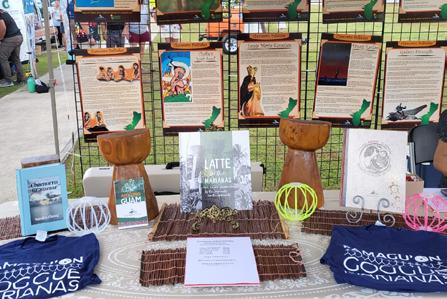
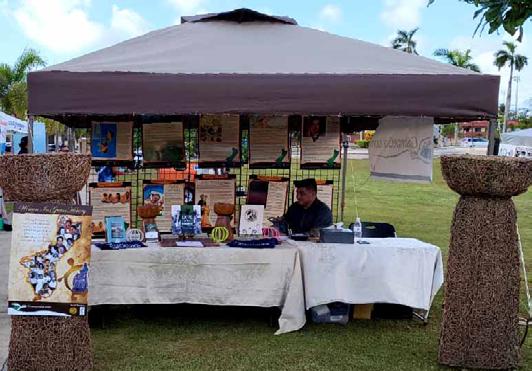

72
Moving Forward

Continue to assist HRRA with:

Historical content
Research materials upon request
73
•
•









 Guampedia is a non-profit affiliate of the University of Guam with operations funded by the Government of Guam’s Tourism Attraction Fund.
Traditional seafaring canoe. Courtesy of Traditions Affirming our Seafaring Ancestry
Guampedia is a non-profit affiliate of the University of Guam with operations funded by the Government of Guam’s Tourism Attraction Fund.
Traditional seafaring canoe. Courtesy of Traditions Affirming our Seafaring Ancestry































































 Maila Yan Bisita Ham
Continued
Maila Yan Bisita Ham
Continued















 The Rope of Tradition was written by Saipan Carolinian Lino M. Olopai with the assistance of cultural anthropologist Dr. Juliana Flinn. It describes Mr. Olopai’s journey in finding a balance between the traditional ways in which he was raised and the evolving demands of our world today.
Guampedia
The Rope of Tradition was written by Saipan Carolinian Lino M. Olopai with the assistance of cultural anthropologist Dr. Juliana Flinn. It describes Mr. Olopai’s journey in finding a balance between the traditional ways in which he was raised and the evolving demands of our world today.
Guampedia






























































